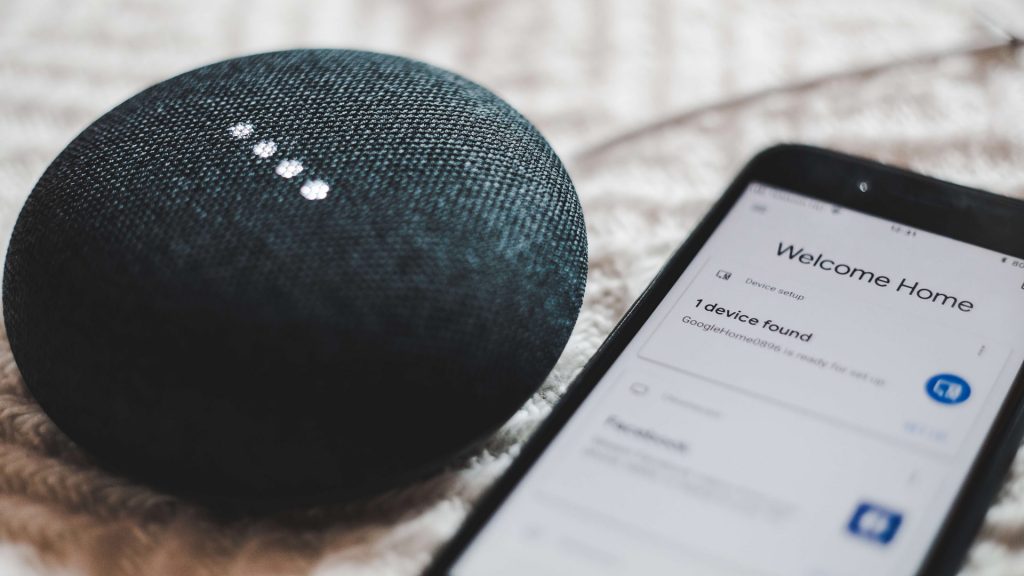We took our first look at the subject of voice assistants and their features a year ago. At that time, Amazon’s Echo was the only product available on the German market. Google’s Home was about to launch, and Apple’s HomePod had been announced but was still a long way off.
Now these competitors have rolled out their voice assistants and speaker systems — and slowly but more or less surely, they seem to be taking over living rooms and offices. So it’s time to talk about why these smart assistants will gain more and more acceptance.
Voice assistants – a brief overview
Smart assistants can be found in all of the newer smartphone models. There is Alexa from Amazon, Siri in the iPhone, Google’s Assistant and Bixby in Android smartphones, and Microsoft’s Cortana in the newer Windows laptops and tablets. In addition to having the assistants on their smartphones, consumers are increasingly acquiring speakers that are specially designed to work with the voice assistants: the Echo for Amazon’s Alexa, the HomePod for Siri and the Google Home.
All of the models provide more or less similar features: control of numerous household items — such as thermostat adjustment via time switches or features to monitor your home — as well as services like online banking and the ability to place orders, or even consult your own personal fashion advisor.
Because of its early launch, Amazon’s Echo (with voice assistant Alexa) is the leader among the smart speakers, and many electronics and appliance makers have therefore created an interface in their products for Alexa voice recognition. The aim here is primarily to leverage automated processes to make everyday life easier for users and to enable multitasking.
Users (in Germany at least) had to wait a long time for the HomePod. According to Apple’s marketing, the HomePod smart speaker focused mainly on good sound for playing music and movies. The HomeKit series now provides just as many control options for your home as Amazon does. With the help of what are called“scenes”, users can have multiple accessories perform some action automatically — heat up the bath water, turn on the coffee machine, raise the window blinds and play get-out-of-bed music, for example.
Google Home is in no way inferior to the Apple and Amazon products. On the contrary, users can also access all the features of Google search for all the questions that come up in everyday life.
Customers in Germany are also eagerly awaiting Bixby, the assistant available in Samsung devices of the eighth generation and later. Bixby offers an automatic ID assistant that will be particularly welcomed by shoppers and product manufacturers. With this feature, a device can use the camera to identify an object. The assistant will then show who stocks the item and where it can be ordered.
What all of the assistants have in common is their ability to make customers’ everyday lives easier, smoother and less stressful by allowing them to use voice commands to carry out a variety of tasks simultaneously and without further input by automating actions and linking up multiple appliances or accessories.
But do users see things the same way?
Talking with a loudspeaker
It would be a mistake to think that the interaction between the user and voice assistant consists of monosyllables, or that it’s one-sided. These voice-enabled helpers now offer many modes of interaction; they can even tell jokes or throw their own parties .
What users like most about their assistants, though, is the fast, easy availability of information, news, weather reports, music and services, such as the ability to order a meal. Moreover, according to the Conversational Commerce study of Capgemini, most consumers are not using HomePods or Echos but instead the assistants in their smartphones. Twenty-four percent of those surveyed even said that they prefer to use the voice assistant over apps or websites. As many as 35 percent of them already order a variety of products by conversing with the pleasant voice on their smartphones. It’s no surprise, then, that the study predicts manufacturers may be able to increase sales through the use of voice assistants.
Convenience and the hands-free mode of operation appear to favour the use of voice assistants. In a study of the German market conducted by “EARS and EYES” , 58 percent of the respondents reported having used a voice assistant on a smartphone, and 17 percent used it on a smart speaker. The authors of the Capgemini study cautiously suggest that interactions with a voice assistant may break down barriers and encourage people to make a decision and a purchase — we will see.
Google’s micro-moments
One vendor is currently drumming up interest in Germany: Google. In the campaign “Mach mal, Google“ (Make Google Do It), the company is promoting its voice assistant by showing many little everyday situations where it can help out or come to the rescue. Amazon ran advertisements a year ago with a similar message.
The principle at work here is what Google calls “micro-moments.” Content and features are presented via click or voice input at just the moment when a user needs them — and in the right format, of course. And this is where companies and content providers come into play. They can offer useful content, information, knowledge, facts, instructions and services as text, graphics, audio or video. And they can do so either directly via Google search or through their own skills and features for voice assistants. There appears to be a demand for snack-sized portions of everyday help that can be consumed quickly.
Conclusion: voice assistants will gain greater acceptance in the future
It isn’t just the big shipping providers and Internet companies who are pouncing on this technology. Automakers, manufacturers of electronic goods, furniture companies and construction businesses have all been expanding their product ranges with functional, intelligent systems and devices that can read what customers want right from their lips, as it were. An intelligent environment that is on the same page with its owner, whether at home or in a pants pocket, creates enormous added value for the user: efficiency, time-savings and multi-tasking ability. It is hard to imagine who would turn that down — though some would make greater use of it than others, of course.
In Germany, for example, the hype seems relatively muted compared to the United States. The reason for that is primarily data-privacy concerns and the need for meaningful rules to prevent unrestricted collection and analysis of data. Appropriate arrangements will be arrived at in this regard.
Still, it’s worth keeping an eye on this trend and maybe even getting into the act yourself, with content and products that are only a word away from the customer.
How to use audio content for your business and content is shown here.
Titelfoto by Bence ▲ Boros on Unsplash

